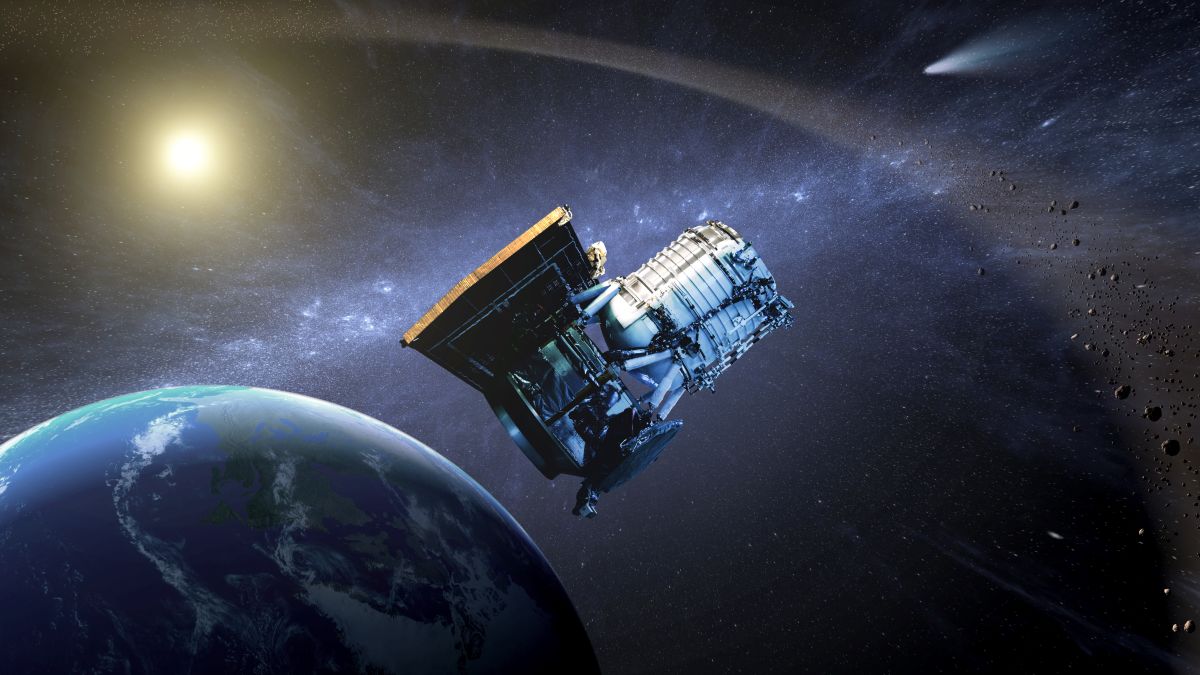NASA Decides Not to Launch Two Already-Built Asteroid Probes

In a surprising turn of events, NASA has made the decision not to launch two fully constructed asteroid probes, marking a significant shift in the agency’s space exploration plans. This unexpected announcement has left both the scientific community and the general public curious about the reasoning behind such a decision. In this article, we will delve into the details surrounding NASA’s choice, exploring the factors and considerations that led to this outcome.
The Background of the Asteroid Probes
Before we delve into NASA’s decision, it’s crucial to understand the background of the two asteroid probes that will remain grounded. The first probe, named “Luna 1,” was designed to explore and study near-Earth asteroids with a specific focus on their composition and potential impact hazards. The second probe, called “Voyager 2,” aimed to investigate the formation and evolution of asteroids and their relationship with other celestial bodies within our solar system.
Technical Challenges and Cost Constraints
One of the primary factors influencing NASA’s choice was the presence of significant technical challenges and cost constraints associated with launching the two asteroid probes. Space exploration endeavors are notorious for their complex engineering requirements and exorbitant financial investments. In the case of Luna 1 and Voyager 2, these challenges proved to be insurmountable within the agency’s current resources.
Shifting Priorities and Mission Realignment
Another critical aspect leading to the decision not to launch the already-built asteroid probes is NASA’s shifting priorities and mission realignment. Over the years, space exploration has evolved, and new discoveries have prompted a reevaluation of scientific objectives. As a result, NASA had to reassess its exploration roadmap and allocate resources accordingly. The decision to forgo the launch of Luna 1 and Voyager 2 reflects this reevaluation process and the agency’s determination to pursue alternative missions that align more closely with their updated goals.
Technological Advancements and Future Prospects
While the cancellation of the two asteroid probes may seem like a setback, it is essential to recognize the positive aspects that come with it. Technological advancements in the field of space exploration are occurring at an accelerated pace. By redirecting resources from Luna 1 and Voyager 2, NASA can invest in new projects that leverage these advancements, promising greater scientific breakthroughs and enhanced understanding of our universe. This decision opens up exciting opportunities for future space missions that could potentially yield even more remarkable discoveries.
Internet of Things (IoT): Connecting the Unconnected
The Internet of Things (IoT) is a network of interconnected devices that communicate and exchange data with each other. From smart homes to industrial automation, IoT has the potential to transform numerous industries. With the increasing adoption of IoT devices, we can expect a seamless integration of our physical and digital worlds.
Artificial Intelligence (AI): Unleashing Intelligent Machines
Artificial Intelligence, or AI, is revolutionizing the way we perceive and interact with machines. From voice assistants to autonomous vehicles, AI is becoming an integral part of our daily lives. With advancements in machine learning and deep learning, AI systems are becoming more capable of performing complex tasks and making decisions independently.
Blockchain: Decentralizing Trust and Security
Blockchain technology has gained significant attention in recent years due to its potential to revolutionize industries such as finance, supply chain, and healthcare. By providing a decentralized and transparent system for recording transactions, blockchain enhances trust, security, and efficiency in various processes.
Augmented Reality (AR) and Virtual Reality (VR): Redefining User Experience
Augmented Reality and Virtual Reality technologies have transformed the way we perceive and interact with digital content. From immersive gaming experiences to virtual tours of real estate properties, AR and VR are reshaping various industries. The future prospects of AR and VR hold the promise of even more realistic and interactive experiences.
5G Connectivity: Empowering the Hyperconnected World
With the advent of 5G technology, the world is poised to enter a new era of hyperconnectivity. The blazing-fast speeds and low latency of 5G networks will enable the seamless connection of billions of devices. This opens up new possibilities for autonomous vehicles, smart cities, and the Internet of Things.
Public Engagement and Communication Efforts
NASA understands the importance of public engagement and ensuring transparency in its decision-making process. Throughout this course, the agency has made concerted efforts to communicate the reasons behind its choice effectively. By engaging with the public, NASA aims to foster understanding and maintain support for its continued exploration of space. The agency remains committed to providing educational resources and opportunities for the public to stay involved and informed about future space missions.
Conclusion
In conclusion, NASA’s decision not to launch two already-built asteroid probes signifies a strategic shift in the agency’s space exploration plans. Technical challenges, cost constraints, shifting priorities, and the prospects of technological advancements have all played a significant role in shaping this outcome. Although the cancellation of Luna 1 and Voyager 2 may disappoint some, it highlights NASA’s commitment to adapt, innovate, and pursue missions that hold the greatest promise for scientific advancement. As we look to the future, exciting opportunities lie ahead, propelling humanity further into the vast realms of space.








